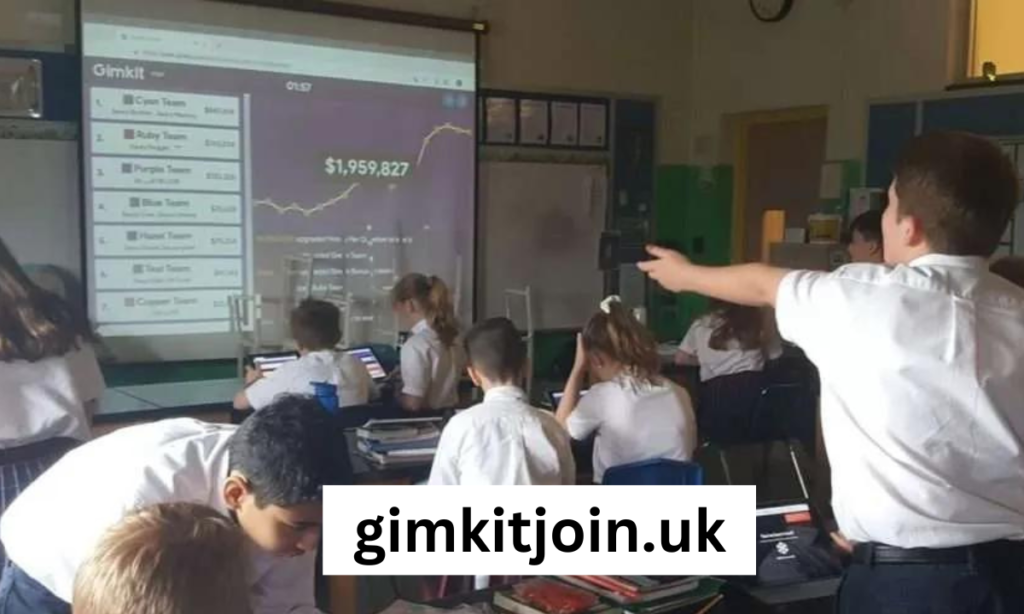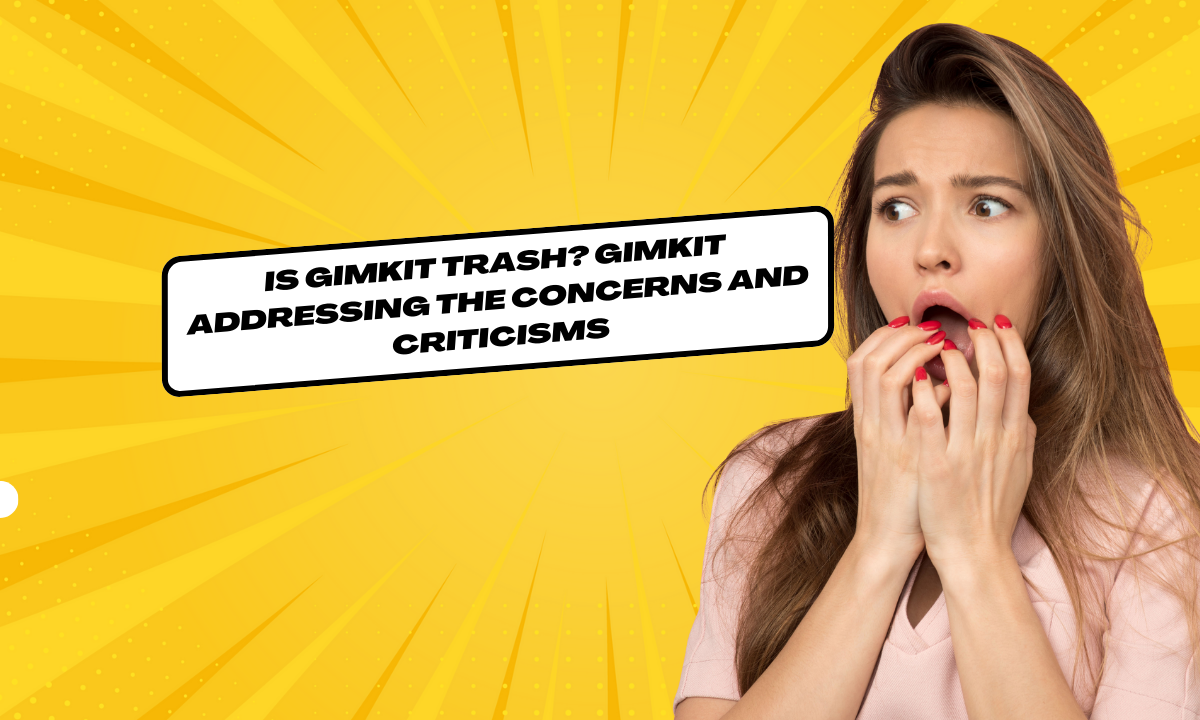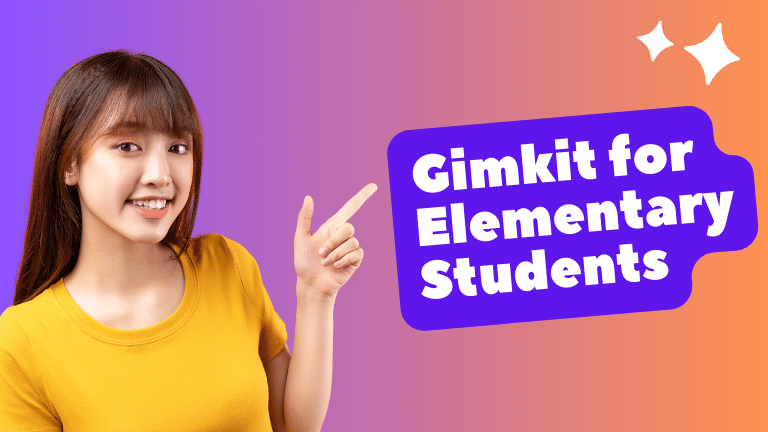is gimkit trash? Gimkit Addressing the Concerns and Criticisms
is gimkit trash? Gimkit Addressing the Concerns and Criticisms of a Controversial Game-Based Learning Platform In the rapidly evolving landscape of educational technology, game-based learning platforms like Gimkit have garnered both praise and criticism from educators, students, and parents alike. While some hail Gimkit as a revolutionary tool that enhances engagement and learning outcomes, others have voiced concerns about its potential drawbacks and limitations. This article aims to address the criticisms leveled against Gimkit, providing a balanced perspective and exploring potential solutions to address the platform’s shortcomings.
Understanding the Criticism: Common Concerns about Gimkit
To fully comprehend the criticisms surrounding Gimkit, it is essential to delve into the specific concerns raised by its detractors. Here are some of the most commonly cited issues:
- Gamification Overshadowing Learning: One of the primary criticisms of Gimkit is that its emphasis on gamification elements, such as leaderboards, points, and virtual rewards, may overshadow the actual learning process. Critics argue that students may become more focused on winning and accumulating points rather than genuinely engaging with and understanding the academic content.
- Potential for Distraction and Disruptive Behavior: The competitive and fast-paced nature of Gimkit’s game-based activities has raised concerns about the potential for distraction and disruptive behavior in the classroom. Some educators worry that the excitement and adrenaline associated with gameplay may lead to students becoming overly excited or disruptive, hampering the learning environment.
- Lack of Differentiation and Personalization: While Gimkit offers customizable content, critics argue that the platform may lack sufficient differentiation and personalization options to cater to the diverse learning needs and abilities of students. This concern is particularly relevant for students with special educational needs or those who require more targeted support.
- Technical Challenges and Accessibility Issues: As with any technology-based platform, Gimkit is not immune to technical challenges and accessibility issues. Concerns have been raised about potential connectivity problems, compatibility issues with certain devices, and barriers to access for students with disabilities or limited access to technology.
- Overreliance on Technology and Potential for Addiction: Some critics argue that the gamified nature of Gimkit may contribute to an overreliance on technology in the classroom, potentially fostering unhealthy habits or even addiction-like behaviors among students. There are concerns about the long-term effects of excessive exposure to such platforms on students’ social and emotional development.
While these criticisms raise valid points and highlight areas for improvement, it is essential to approach them with an open mind and a willingness to explore solutions that can enhance Gimkit’s effectiveness while addressing the legitimate concerns raised.
Addressing the Criticisms: Potential Solutions and Best Practices
To address the criticisms leveled against Gimkit and harness its full potential as an effective game-based learning tool, it is crucial to explore potential solutions and best practices. By implementing these strategies, educators and developers can mitigate the concerns and create a more balanced and effective learning experience for students.
- Striking a Balance between Gamification and Learning:
- Implement clear learning objectives and align game elements with educational goals
- Provide opportunities for reflection and discussion on the academic content
- Emphasize the value of learning over competition and point accumulation
- Integrate formative assessments and feedback loops to ensure content mastery
- Classroom Management Strategies for Engaged Learning:
- Establish clear expectations and rules for appropriate behavior during game-based activities
- Incorporate mindfulness and self-regulation techniques to maintain focus
- Implement structured breaks and transitions to manage energy levels
- Foster a positive and supportive classroom culture that values respectful competition
- Differentiation and Personalization Enhancements:
- Collaborate with educators and learners to gather feedback on differentiation needs
- Implement adaptive learning algorithms to personalize content and difficulty levels
- Offer alternative modes of engagement and assessment for diverse learners
- Integrate accessibility features and assistive technologies for students with disabilities
- Robust Technical Support and Accessibility Measures:
- Conduct regular compatibility testing and updates to ensure cross-device functionality
- Provide comprehensive user guides and technical support resources
- Implement accessibility features and assistive technology integrations
- Offer offline or low-bandwidth alternatives for areas with limited connectivity
- Balanced Integration and Digital Wellness Initiatives:
- Promote a balanced approach to technology use in the classroom
- Implement time limits and breaks to prevent excessive screen time
- Educate students on digital wellness and responsible technology use
- Encourage physical activity, social interaction, and non-digital learning experiences
- Continuous Improvement through Feedback and Collaboration:
- Establish open communication channels with educators, students, and parents
- Regularly collect and analyze feedback to identify areas for improvement
- Foster collaborative partnerships with educational experts and researchers
- Continuously refine and update the platform based on best practices and emerging research
By implementing these solutions and best practices, Gimkit and other game-based learning platforms can address the legitimate concerns raised by critics while enhancing their effectiveness as educational tools. It is crucial to strike a balance between leveraging the motivational power of gamification and maintaining a strong focus on academic content and learning outcomes.

The Role of Educators in Effective Implementation
While developers and platform providers play a crucial role in addressing the concerns surrounding Gimkit, educators themselves are instrumental in ensuring its effective and responsible implementation in the classroom. By adopting best practices and fostering a positive learning environment, teachers can mitigate potential drawbacks and maximize the benefits of game-based learning platforms like Gimkit.
- Professional Development and Training: Educators should seek out professional development opportunities and training resources to enhance their understanding of game-based learning principles, classroom management strategies, and effective implementation of platforms like Gimkit. This knowledge can help them leverage the platform’s strengths while addressing potential challenges proactively.
- Clear Learning Objectives and Alignment: Before implementing Gimkit activities, educators should clearly define their learning objectives and ensure that the game-based content aligns with these objectives. This alignment helps maintain a strong focus on academic content and prevents gamification from overshadowing learning.
- Balanced Integration and Lesson Planning: Gimkit should be integrated into the curriculum as part of a balanced and well-planned lesson, rather than being the sole focus of instruction. Educators should carefully plan how to introduce, facilitate, and debrief Gimkit activities, incorporating opportunities for reflection, discussion, and formative assessment.
- Classroom Management and Engagement Strategies: Effective classroom management strategies are crucial when implementing game-based learning activities. Educators should establish clear expectations, foster a positive classroom culture, and employ techniques to maintain student focus and engagement while managing energy levels.
- Differentiation and Accommodation: To address concerns about lack of differentiation and personalization, educators should explore ways to adapt Gimkit activities and content to meet the diverse needs of their students. This may involve providing alternative modes of engagement, incorporating assistive technologies, or collaborating with support staff and specialists.
- Digital Wellness and Responsible Technology Use: Educators play a vital role in promoting digital wellness and responsible technology use among their students. They should reinforce the importance of balanced technology integration, encourage physical activity and social interaction, and educate students on the potential risks and healthy habits associated with digital media consumption.
By embracing these best practices and fostering a supportive and inclusive learning environment, educators can effectively leverage the benefits of game-based learning platforms like Gimkit while addressing the valid concerns raised by critics. Collaboration between educators, developers, and stakeholders is crucial to continuously improve and refine these platforms, ensuring they remain effective and responsible tools for enhancing student engagement and academic achievement.
The Future of Game-Based Learning: Continuous Improvement and Innovation
While the criticisms surrounding Gimkit highlight areas that require attention and improvement, they also present an opportunity for growth and innovation in the field of game-based learning. By embracing a spirit of continuous improvement and collaboration, developers, educators, and researchers can work together to address these concerns and unlock the full potential of this powerful pedagogical approach.
- Ongoing Research and Evidence-Based Improvements: Continuous research and data collection are crucial for informing evidence-based improvements to game-based learning platforms like Gimkit. By collaborating with educational researchers and experts, developers can gain valuable insights into the impact of gamification on learning outcomes, effective classroom implementation strategies, and strategies for addressing potential drawbacks.
- User-Centered Design and Feedback Loops: Incorporating user-centered design principles and establishing feedback loops with educators, students, and parents is essential for identifying and addressing emerging concerns or limitations. By actively seeking and incorporating user feedback, developers can ensure that game-based learning platforms evolve to meet the changing needs and expectations of their users.
- Exploration of Emerging Technologies and Pedagogical Approaches: The field of educational technology.
FAQs
Why do some people say Gimkit is trash?
Gimkit may receive criticism for various reasons. Some users might find it lacking in features, not as engaging as other educational platforms, or not aligning well with their teaching style or curriculum.
What are common complaints about Gimkit?
Common complaints about Gimkit include glitches or technical issues, limited question types, repetitive gameplay, and a lack of depth in educational content.
Is Gimkit completely worthless?
While some users may have negative experiences with Gimkit, it’s essential to recognize that different platforms work better for different educators and students. Some find value in Gimkit’s gamified approach to learning despite its flaws.
Are there alternatives to Gimkit?
Yes, there are several alternatives to Gimkit available in the educational technology market. Some popular alternatives include Kahoot!, Quizizz, Quizlet, and Flippity.
How can I make the most of Gimkit despite its flaws?
To maximize your experience with Gimkit, focus on its strengths, such as its gamified learning environment and customizable features. Additionally, provide constructive feedback to the developers to help improve the platform over time.


![5 Best Gimkit Unbelievable Strategies [2024]](https://gimkitjoin.uk/wp-content/uploads/2024/02/How-does-the-Gimkit-affiliate-program-work-6-768x461.png)


![How to Make a Moving Sentry in Gimkit [2024]](https://gimkitjoin.uk/wp-content/uploads/2024/06/5-9-768x448.png)

![How to Beat Don’t Look Down[Gimkit’s Newest Game Mode 2024]](https://gimkitjoin.uk/wp-content/uploads/2024/02/hobby-3-768x397.png)